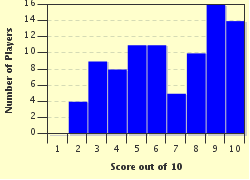Quiz Answer Key and Fun Facts
1. The photo shows a beautiful World Heritage Site from a country whose flag is a blue cross fimbriated in white on a red background. The country's national anthem is 'Kongesangen' ("The King's Song") and one of its two official languages is Sami. It originally unified as a country in the 9th century, and again became an independent kingdom in 1814. Where on Earth is this?
2. The photo shows the famous Jemaa el-Fnaa market in the heart of a major city in a country whose flag is a centrally-situated black-bordered green pentagram on a dark red background. A major regional power under the Idrisid dynasty (established in 788) it has been a protectorate of both France and Spain and an independent kingdom was re-established in 1956. You can spend dirham here. Where on Earth are we?
3. The photo shows the imposing Rozafa Castle, which stands 430 feet above sea level near to the historic city of Shkoder. This country's flag has a black, double-headed eagle centrally located on a red background and its national anthem is 'Himni i Flamurit' ("Hymn to the Flag"). Its single-chamber parliament is called the 'Kuvendi'. Where on Earth are we?
4. In the background is the skyline of the national capital, whose name translates to "place of dreams", whilst the marina in the foreground screams "money". This country's flag consists of a horizontal white band on the left of a wider red band, separated by five triangles forming a serrated edge. With an area of just 295 sq miles, it gained independence in 1971. Where on Earth are we?
5. The Juche Tower dominates the skyline of the national capital, as seen across the Taedong River. This country's flag consists of a wide red horizontal band with narrow blue bands at top and bottom, and a red five-pointed star in a white circle offset to the left. The language here is written in the Chosŏn'gŭl script and the Anglicized name of the national anthem is 'Aegukka' ("The Patriotic Song"). Where on Earth are we?
6. The picture shows the remains of a famous 15th century city located 8,000 feet up in the mountains. The flag of the modern-day country is of simple design with three vertical bands of red-white-red. Two of the three official languages spoken here are Quechua and Aymara, and tourists will need to swap their dollars and pounds for Sol to make their purchases. Where of Earth are we?
7. Although not open to the public, the Royal Palace (pictured) in the northwest of the capital Nukuʻalofa is easily viewed from the waterfront. The country's flag is all red except for a white rectangle containing a red Greek cross in the upper hoist corner. The only Pacific island nation that was never officially colonized, its currency is the Pa'anga. Where on Earth are we?
8. The photo shows the Tian Shan Mountains, just an hour's drive south of Bishkek, the capital of this rugged, mountainous, landlocked country. Adopted in 1992, the national flag retained the colours of their former Russian overlords: a red background with a centrally located Sun with 40 uniformly-spaced rays. The country's national hero is Manas, who led the united tribes against the Mongols in the 10th century. Where on Earth are we?
9. The photograph shows the historic fishing port of Hoi An, a World Heritage Site since 1999. This country's flag is all red with a yellow five-pointed star in the centre. Historically, this was part of Imperial China for more than a millennia, and an independent state was formed in 939 AD. Similar in size to Germany, its national anthem is 'Tiến Quân Ca' ("Army March"). Where on Earth are we?
10. The photograph shows the beautiful Lake Ohrid, one of Europe's deepest and oldest lakes, which straddles the southwestern border of this landlocked country. This unusual national flag design has a red background with a stylized yellow sun radiating in eight directions from the centre to the edge. The capital is situated on the Vardar River. In 2014, it was home to about 25% of the two million population of this country of mountains, valleys and rivers. Where on Earth are we?
Source: Author
EnglishJedi
This quiz was reviewed by FunTrivia editor
Pagiedamon before going online.
Any errors found in FunTrivia content are routinely corrected through our feedback system.

